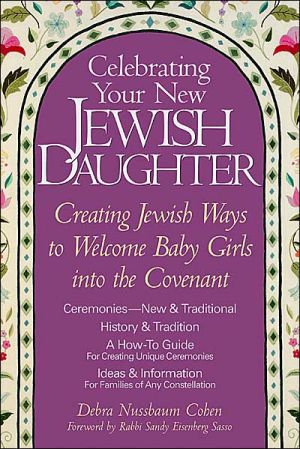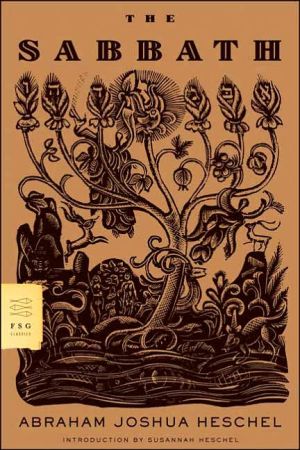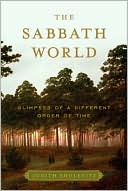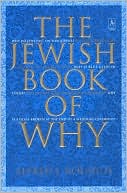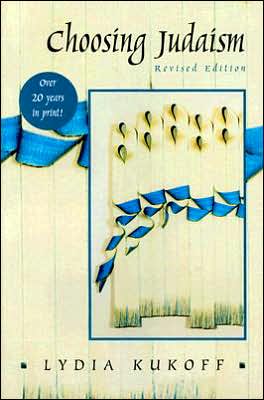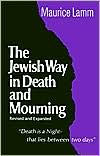Celebrating Your New Jewish Daughter: Creating Jewish Ways to Welcome Baby Girls into the Covenant - New and Traditional Ceremonies
Search in google:
\ \ Chapter One\ \ \ The History of This\ New Tradition\ \ \ There's a reason why the time is ripe for a book on this topic. It's because we're ready. We're ready as a Jewish people, as Jewish women, as people who love Jewish women, and most of all, as people who love the little Jewish girls who are being born into our lives and community. While there has been much focus in recent times on creating naming ceremonies for girls, we know that it's time to honor their arrival with the same depth of ritual and praise of God with which we honor our sons.\ Those who have preceded us in welcoming their daughters for the past quarter-century have been busy inventing, discovering, unearthing, and adapting rituals and compiling them into their own unique ceremonies. Several important works have preceded this book—articles, the first of which was published in 1973, and booklets and chapters about simchat bat in books about Jewish ritual. The earliest published collection dates back to 1977, when the New York Jewish feminist group Ezrat Nashim published their booklet of welcoming ceremonies. Since then, welcoming ceremonies for girls have gained acceptance in almost all Jewish circles, and are increasingly popular. Creative ceremonies are to be found in all but the most right-wing circles of the Orthodox community, and among liberal Jews of every denominational affiliation.\ There is growing interest as well among new parents who want to welcome their daughters with Jewish ritual, but who don't necessarily belong to a synagogue or know quite where to turn for assistance.So much has been written by thoughtful, creative Jews to welcome their daughters that thousands upon thousands of such ceremonies are circulating, most of them from one pair of hands to another. Enough has been developed so that it's no longer necessary for each Jewish parent of a new daughter to reinvent the wheel. There is a level of egalitarianism around simchat bat ceremonies unlike that around any other Jewish ritual, probably because so few of us, no matter what our denomination or level of Jewish involvement, grew up seeing rabbis lead welcoming ceremonies for girls. We don't feel so much that we are breaking from a Jewish tradition as much as we are building on it, extending it, creating the next chapters of our prayer books. The fact that we are all, essentially, beginners in creating this ritual of celebration and sanctification for our daughters has permitted a great unleashing of liturgical creativity. By gathering together the elements of these ceremonies, this book provides a single comprehensive resource from which to plan the most important new ones—yours.\ In collecting welcoming ceremonies from Jews all over the world, I discovered a curious thing: Common threads of structure and liturgy run through most of them. They are shaped along similar lines, with a parallel order, and share several oft-used blessings and lines of beautiful verse from the Torah that are particularly well suited to the occasion. While the Reform, Reconstructionist, Conservative, and even centrist Orthodox movements have published sample prayers and welcoming ceremonies for girls in their rabbis' manuals and in the Reform movement's book of home-based rituals, Jewish religious authorities have not codified a single simchat bat or brit bat rite.\ The brit milah ceremony for boys is a single ritual of prayers, blessings, and the physical act of cutting the foreskin, which is universally practiced. It is fundamentally the same whether the ritual is being performed at the hands of a Chasidic rabbi in Brooklyn or a Reform mohelet (female circumciser) in Georgia. We have no such single practice for our girls. It is too new a ceremony, still being tried on and shaped by every pair of parents that welcomes their daughter this way. That means there is no set liturgy, that each time the responsibility for what we are to do is in our hands. That is our challenge and our opportunity.\ Jewish religious practice is, and always has been, an evolving, organic process, reflecting the needs of an individual Jewish community at a particular point in time and influences from the cultures in which we have lived. As feminist Jewish theologian Judith Plaskow has written, the boundaries of what is religiously acceptable evolve over time in the context of changing circumstances. The newness and innovative nature of simchat bat extends to each of us the opportunity to compose the ceremony that feels best suited to our family's needs. What will feel right to one family in the simchat bat they create for their daughter might feel awkward or foreign to another.\ But these ceremonies work best, too, when they are rooted not simply in modern poems and songs, reflections of the popular culture of the moment in which we are living, but in what have become elements of classical Jewish liturgy. The religious evolution reflected in the popularity of welcoming ceremonies for Jewish girls does not mean a break with the past. Instead, it means an adaptation of tradition and continuity, bringing some of the same precepts that we apply to the ritual welcoming our sons into consonance with our contemporary sensibilities. This evolution illustrates the vitality of contemporary Judaism and its centrality in our lives.\ I found, in reviewing the hundreds of ceremonies sent to me from Jewish communities around the world, that there has already been a process of organic codification, that certain prayers and poems and rituals are emerging in many, though far from all, of the ceremonies as the elements that seem right to most of the parents. So while there has been no rabbinic seal of approval designating a single ceremony as the only suitable one, there has been, in fact, a process turning experiment into accepted liturgy all the same. And, as befits this egalitarian age, when the power to determine the level of Jewish engagement we and our children will have is up to our will alone, this process has been in the hands of the people.\ The first contemporary welcoming ceremonies for Jewish daughters were held in the early 1970s by people involved in the then-nascent havurah movement, whose goal it was to take the power of Judaism out of the sole purview of the rabbinate. They wanted to go beyond rabbis and cantors performing rituals for their congregants, empower the laity to take on those tasks and commitments themselves, and create a renewed sense of intimacy and community in Jewish life.\ One of the earliest published daughter's welcoming ceremonies was that created by Rabbi Michael and Sharon Strassfeld for their daughter Kayla in 1973. They were central figures in the movement now known as Jewish Renewal and edited the groundbreaking Jewish Catalog series of books, which put do-it-yourself Judaism literally into people's own hands. It was about that time that two Reform rabbis published a new ritual called kiddush peter rechem (sanctification of the womb's opening) to mark the arrival of a first child of either sex, in an egalitarian parallel to the traditional pidyon ha-ben, or ceremonial redemption of a one-month-old firstborn son from service in Jerusalem's holy Temple.\ In an article in Response magazine in the summer of 1973, Rabbi Sandy Eisenberg Sasso discussed a welcoming ceremony she and her husband, Rabbi Dennis Sasso, had created for the birth of a daughter of a colleague, and offered an outline of that ritual; the article also explained the rationale behind the creation of this new kind of ceremony.\ Excitement and ferment about these emerging modern welcoming rituals for girls were also spawned in 1973 at the first Conference on Women and Judaism. "Thirty years ago nobody even asked the question of whether a girl should have a ceremony," says Rabbi Nina Beth Cardin. "There is a huge awareness that has developed over a relatively short span of time, and it has bubbled up from the bottom. These ceremonies were a very radical expression back then, and nowadays they're not," she said.\ The very notion of welcoming daughters in a religiously significant way is rooted in an egalitarian concept of what Judaism should be: different, perhaps, for females and males, but equal nonetheless. It is an idea born out of feminism and the then-astonishing idea that women have a voice within Judaism that deserves, and needs, to be heard. Today these ceremonies are held by people who regard feminism in all sorts of different ways—with enthusiasm, with suspicion, or with indifference. Like so many of the benefits enjoyed by contemporary women and men, even if they are embraced by people who would describe themselves as anti-feminist, they are rooted in feminism nonetheless.\ But welcoming ceremonies have also grown beyond the ideological confines of what feminism may be. Today they are embraced, as one modern Orthodox woman wrote in her own daughter's welcoming ceremony, as "women's Torah."\ Orthodox Jews have, by definition, historically been less open to ritual innovation than more liberally inclined Jews, but it didn't take long after the very first contemporary welcoming ceremonies were created and publicized for Orthodox Jews to adapt the idea to their own theological and liturgical perspectives, probably starting with the ceremony Joseph and Sharon Kaplan created to welcome their daughter, Micole, in the winter of 1974. Until then, traditionally observant Jews had welcomed their daughters with the standard blessings in synagogue and, sometimes, a festive kiddush reception after services.\ Three years later Orthodox Rabbi Yechiel Eckstein and his wife, Bonnie Eckstein, held a contemporary simchat bat for their daughter Tamar in Riverdale, New York. Rabbi Eckstein's mother had said before the baby arrived that if it was a boy, family members would travel to New York for the brit milah, but if the new baby was a girl, they wouldn't come to meet her until later. The inequity of her statement spurred the Ecksteins to create something ritually significant for their daughter, and so they held their welcoming ceremony at home, weaving together several traditional sources by reciting psalms and the shehechiyanu, the prayer of thanksgiving. Bonnie Eckstein said the gomel prayer of thanksgiving for having come through a dangerous passage, and then recited the prayer of Chana, in which the previously infertile biblical figure gives birth after heartfelt petition to God and then says "My heart exalts to Hashem." Rabbi Eckstein said at the time that "all rabbis, including the Orthodox, agree that women share equally with men in the covenant with God. So as I see it, if women share equally, it is not only permissible to devise an appropriate symbol for girls entering the covenant, it is a religious obligation. The technical problem is how to put together a ceremony."\ Today we've mastered that technical problem of how to put together a ceremony, though the details and approach are still being worked out, as one family at a time creates the ritual that best reflects its personality and perspective on Judaism.\ Today we are creating the rituals that our own children, we hope, will build on when the time comes for them to welcome our grandchildren. Perhaps by that time, when the contemporary simchat bat has been employed by a second generation, there will be some sort of codified ceremony used by, and adapted from, Jews the world over. It's likely to take more time than that and, unlike with the brit milah, there will probably not be a sole core welcoming ceremony for girls employed by Reform, Reconstructionist, Conservative, and Orthodox Jews in our lifetimes. There will probably always be a great range of variation, reflecting the attitudes and interests of people approaching Judaism in many different ways, each, perhaps, an aspect of the seventy faces of Torah described by our ancient sages.\ We are now at the time that borders the end of the first generation of feminist Jewish women and men who created the very idea of a contemporary ritual with which to welcome their daughters, and the beginning of the next. We're at the cusp of an epochal moment, when the very first girls who were welcomed by their parents in inventive contemporary rituals are becoming old enough to welcome their own daughters. As we move forward with our daughters' celebrations today—creating, experimenting, trying things on, and seeing which aspects fit and which don't—it's important to be familiar with that which has gone before, and to anchor our rituals in as much of Jewish tradition as we can. The notion that we should welcome our daughters with a serious Jewish ritual was a revolutionary idea when the first parents did it. But by basing their daughters' ceremonies on traditional sources and forms of prayer, they acknowledged a truth we should continue to keep in mind today: The most effective ritual is evolutionary, rather than broken off from its roots. Drawing on our own tradition links us to the generations who went before, as we welcome the generation that will succeed us.\ On a fundamental religious plane, two streams of thought have emerged about the role of a daughter's welcoming ceremony. One, the more traditional view, is that girls are born into the covenant that God made with the Jewish people and do not need the "finishing step" of brit milah that boys are obligated to undergo to fully be part of it. The ceremonies of people who have that view are generally titled simchat bat or zeved habat and focus on celebration through recitation of prayers of thanksgiving, psalms, and blessings, and a traditional form of ritually naming their daughter.\ The other view is that girls, like boys, must go through a ritual transition in order to be entered fully into the covenant. (See chapter 3 for a further examination of this issue.) Though Jewish tradition reserves milah (circumcision)—the commanded physical manifestation of the covenant—for males, those who share this attitude believe that all Jews must actively enter into the covenant. They generally include the word brit, for covenant, in the title of their welcoming ceremony, and integrate into it a ritual of transition, often using a small representation of a mikvah (ritual bath), footwashing, or a tallit.\ Welcoming ceremonies for our daughters are rituals in their purest sense. Communal rituals capture in symbols the emotions that go with an important life transition. They enhance our lives psychologically, socially, and spiritually, and help us appreciate our connection to our religious culture and heritage. Rituals also mark the liminal experience of moving from one spiritual state of being into another, of crossing thresholds. For some people, holding a welcoming ceremony for their daughter marks the transition from individual baby into covenanted Jew. For others it denotes the transition from her being the new baby in one particular family into her being a member of the larger family of Jews. For all of us who give our daughter the gift of a simchat bat, the ritual marks the transition from individuals into parents and child, and the moment of crossing the boundary between one stage of our lives into the next—a stage full of joy, trepidation, and hope as we are charged with the responsibility of raising this new life.\ Our contemporary welcoming ceremonies are also a midrash, a commentary, on this moment in time. For this is an age in which the power to make of our Jewish futures what we wish is in our hands, and our hands alone. Because of an inadequate or absent Jewish education we may be coming to the task with empty hands, with the only thing clear to us being a sense of our own limitations. But the power is within us: to learn, to integrate, to claim a Jewish future as our own. And what better time to begin, or confirm, that commitment than by ritually marking the birth of our daughters, for whom all things are possible.
ForewordAcknowledgmentsIntroductionPt. 1An Introduction to Contemporary Jewish Welcoming Ceremonies1The History of This New Tradition32Traditional Ways of Welcoming Jewish Daughters, from Cultures around the World113Understanding Covenant and Dedication16Pt. 2Welcoming Everyone4Involving Non-Jewish Loved Ones in Your Welcoming Ceremony255Especially for Adopted Daughters296Especially for Gay and Lesbian Parents36Pt. 3Preparing for Your Daughter's Welcoming Ceremony7Planning the Event: An Orientation, What to Call Your Daughter's Ceremony, When to Have It, Where to Have It, Setting It Up, How Long It Should Be, How to Handle the Unexpected, the Program Guide418Sanctifying Your Surroundings58Pt. 4Creating Your Daughter's Welcoming Ceremony9How to Use This Guide, and the Order of a Contemporary Welcoming Ceremony6910Complete Sample Ceremonies201Notes225Resources228Glossary231About Jewish Lights234
\ Publishers Weekly - Publisher's Weekly\ While the brit milah (circumcision) ceremony welcomes baby boys into the Jewish community, no similar standard celebration exists for baby girls. Cohen, a journalist, introduces and collects welcoming ceremonies that have been invented over the past 30 years, unearthed from Jewish communities around the world and adapted from other rituals. The challenge of the simchat bat (celebration of a daughter), she says, is that its innovative nature "extends to each of us the opportunity to compose the ceremony that feels best suited to our family's needs." To guide parents, grandparents, rabbis and cantors, Cohen has compiled an array of prayers, readings, blessings, songs and rituals that concretize the child's entry into the community. Hebrew texts are accompanied by translations and transliterations. Complete sample ceremonies include Sephardic, Orthodox, humanist and a "modern mikvah ceremony" in which the child is immersed in a vessel representing the traditional ritual bath. The ceremonies that work best, Cohen notes, are rooted in modern poems and songs as well as classical elements of Jewish liturgy. This resource will guide families at one of the most joyous moments of their lives. (June) Copyright 2001 Cahners Business Information.\ \
